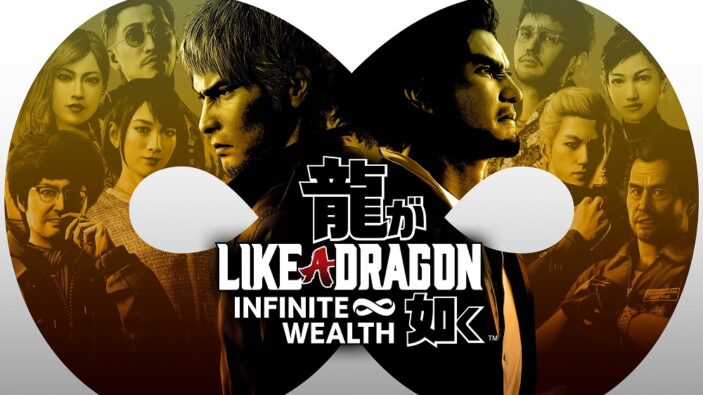
I consider myself a casual fan of the Yakuza (now Like a Dragon) franchise, yet, I’ve played almost all of them. Having played this game’s predecessor Yakuza: Like a Dragon sometime after its launch, I was pleasantly surprised at the decision to bring combat into the turn-based frontier, making for a more tactical blend of fun and action.
Like a Dragon: Infinite Wealth pretty much refines and broadens the franchise in almost every way, adding extra movement and proximity-based attacks to combat, while delivering an emotionally resonant and engaging narrative that rolls the experience along at a fantastic pace.
That being said, it’s as wacky and complex as it’s ever been making it tricky to recommend to newer fans based on the expanded context of the characters and narrative, along with some seriously cutscenes. But if you’re a fan of this franchise in any way, this might be one of the best entries yet.
They Call This a Vacation?
Like a Dragon: Infinite Wealth picks up some time after the events of Yakuza: Like a Dragon, with returning protagonist Ichiban Kasuga now working at an employment agency, trying to get ex-Yakuza members back on their feet. However, he is suddenly fired for reasons he cannot uncover, and is soon dragged into a web of intrigue and online misinformation surrounding his identity and past.
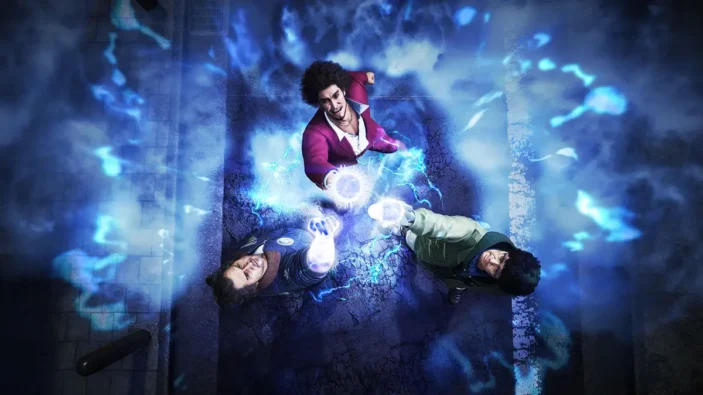
To top it all off, Kasuga soon finds out that his biological mother is still alive and is living somewhere in Hawaii. As he heads there in search of her along with old friends Eric Tomizawa and Chitose Fujinomiya, previous protagonist Kazama Kiryu also heads over, dealing with his own recent traumas, which I’d rather not spoil.
The narrative takes place over 14 chapters, which takes around 40-50 hours to complete, although it never feels like it. For as lengthy as this narrative is, with its multiple twists and turns, you’re taken along for the ride at a breakneck pace which always keeps you guessing and wanting more. The only real gripe I have here is that it’s still embedded within the lore of the franchise, meaning some newcomers might be a little lost, or thrown off by some longer cutscenes that can push 20 minutes each time.
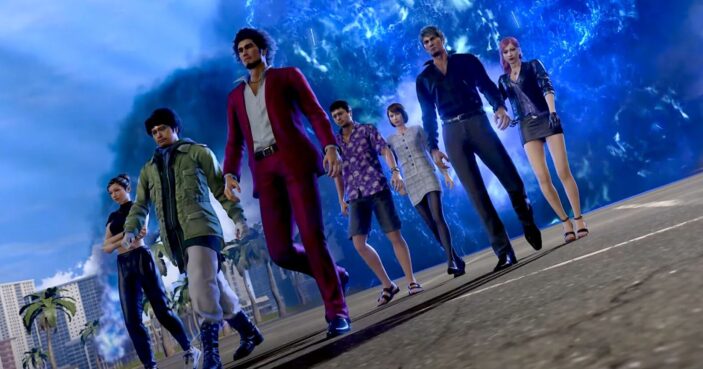
I personally think this slightly more grounded approach to its multiple themes like identity, past, and a sense of belonging all hit really hard here, with Kazuma’s parallel storyline only adding to the overall depth and emotional stakes at hand. Either way, it’s still a fantastic and well-written story that’s only made better by some fantastic voice performances. It’s also been dubbed with English audio, and while the Japanese voice actors sound a little more natural, the English voice actors are certainly decent.
Hit Hard and Fast
Combat is still turn-based, but has been tweaked slightly to allow for a greater area of movement within combat situations, along with proximity-based attacks, in which enemies can but hit into and towards each other for extra damage. You can even knock them into other party members for chain moves and additional attacks which are consistently satisfying when done right. The additional movement within an area means you can even attack from behind for additional damage and surprise attacks.
You’ll still have access to all your standard attacks, guards, special attacks, and inventory collection, but these aforementioned additions bring a little more flexibility to combat and encourage additional options for both new attacks and combinations. That being said, I recommend this type of turn-based combat for those who tend to stay away from these types of games, simply due to the heightened sense of pace and feel. When you get the hang of Like a Dragon’s: Infinite Wealth’s flow and mechanics, you’ll find that you rarely have time to waste, unless you’re intentionally making time to figure out your next move.
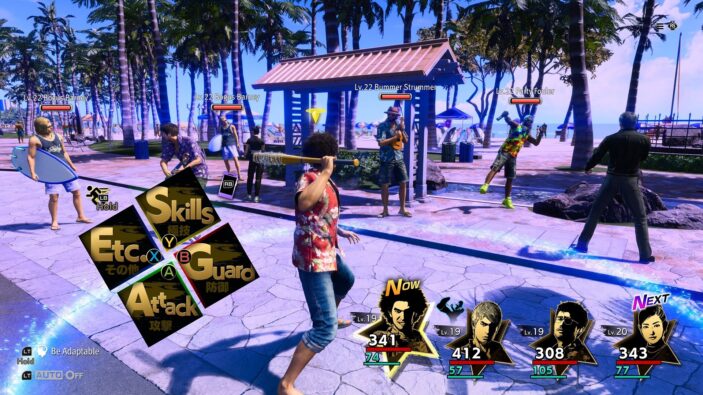
You’ll also get the chance to party up with up to three other members in combat, each with their own turns and abilities. They can even grab makeshift weapons in the environment and each use their own unique special attacks which can prove handy against certain types of enemies. I find it hilarious how often you come up against ‘Suspicious Men’ or ‘Hungry Hungry Homeless’ out in the streets, but each enemy generally indicates if they’re weaker towards a particular type of attack.
Some tougher enemies even need to have their guards broken before they can be damaged, which can only be done by certain characters and special moves, meaning that at one point or another, you’ll generally need everyone in your party. Keep in mind though, that while other party members can be knocked out and revived, Ichiban’s death will mean that you’ll have to start again.
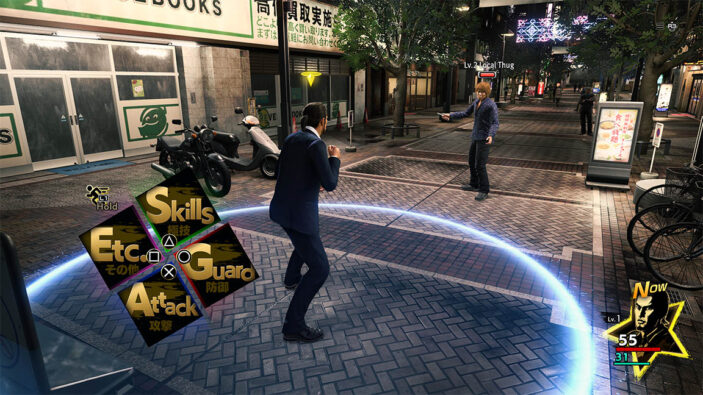
I must admit, for as fun and accessible as this combat is, Kazuma’s introduction brings with it a range of new options. As fans would expect, he still comes with his multiple combat stances, but while those stances in previous Yakuza games gave him access to a list of new attacks, these stances now allow for additional perks in combat, like extra turns for combination attacks and grapple moves. His Heat bar also returns, dishing out devastating attacks when full and activated.
Along the way, you’ll also be able to level up your characters but strengthen bonds between frequently used party members so that combination attacks are a little stronger. The job system returns once again, allowing characters to try out different classes, each with their own unique move sets and abilities. There’s plenty to choose from along the way, although some jobs are limited to male or female party members.
Overall, combat is well-paced and incredibly fun, making it one of the best examples of turn-based combat out there today.
Surfin’ Around
While a decent portion of the story is spent in Yokohama and Kamurocho regions from previous games, your time will mostly be spent wandering the stress and beaches of Hawaii. While it’s a refreshing change of scenery, the overall structure in terms of side missions still feels the same.
The Sujimon system also returns, in which players catch a collection of strange men, similar to Pokémon. This system now includes new ways to train and fight as well. There’s also Super Crazy Delivery which is sort of like Crazy Taxi on a bike, while Sicko Mode sees you taking various photos of muscular men.

It’s all incredibly strange, but arguably as strange as it’s always been. But for the sake of variety, both locations are simply bustling with life, things to do, and new ways to interact.
Look the Part
Visually, Like a Dragon: Infinite Wealth is as clean as they come. Character models are super detailed and locations are subject to some pretty nice textures and lighting.
The 60fps frame rate isn’t necessarily as polished, with some infrequent drops, but it’s never as jarring as you might think. Given the action is a little slower than the traditional brawling model, it’s not as distracting during these portions.
Final Thoughts
With plenty to do and see and a story that’s as deep and emotional as the series has ever been, there’s plenty to love about Like a Dragon: Infinite Wealth. The turn-based combat has been improved in almost every way, while the newer Hawaii setting provides a nice change of scenery.
While lengthy cutscenes and a laundry list of characters and previous events might throw casual fans off, this is simply one of the best entries within the long-running franchise to date.
FOUR AND A HALF STARS (OUT OF FIVE)
Highlights: Engaging and emotional narrative; Satisfying combat system; Gorgeous new setting; Plenty of variety through side content
Lowlights: Lengthy cutscenes; Relies heavily on the events and characters of previous games
Developer: Ryu Ga Gotoku Studio
Publisher: Sega
Platforms: PlayStation 5, PlayStation 4, Xbox Series X/S, Xbox One, Windows PC
Available: Now
Review conducted on PlayStation 5 with a code provided by the publisher.
